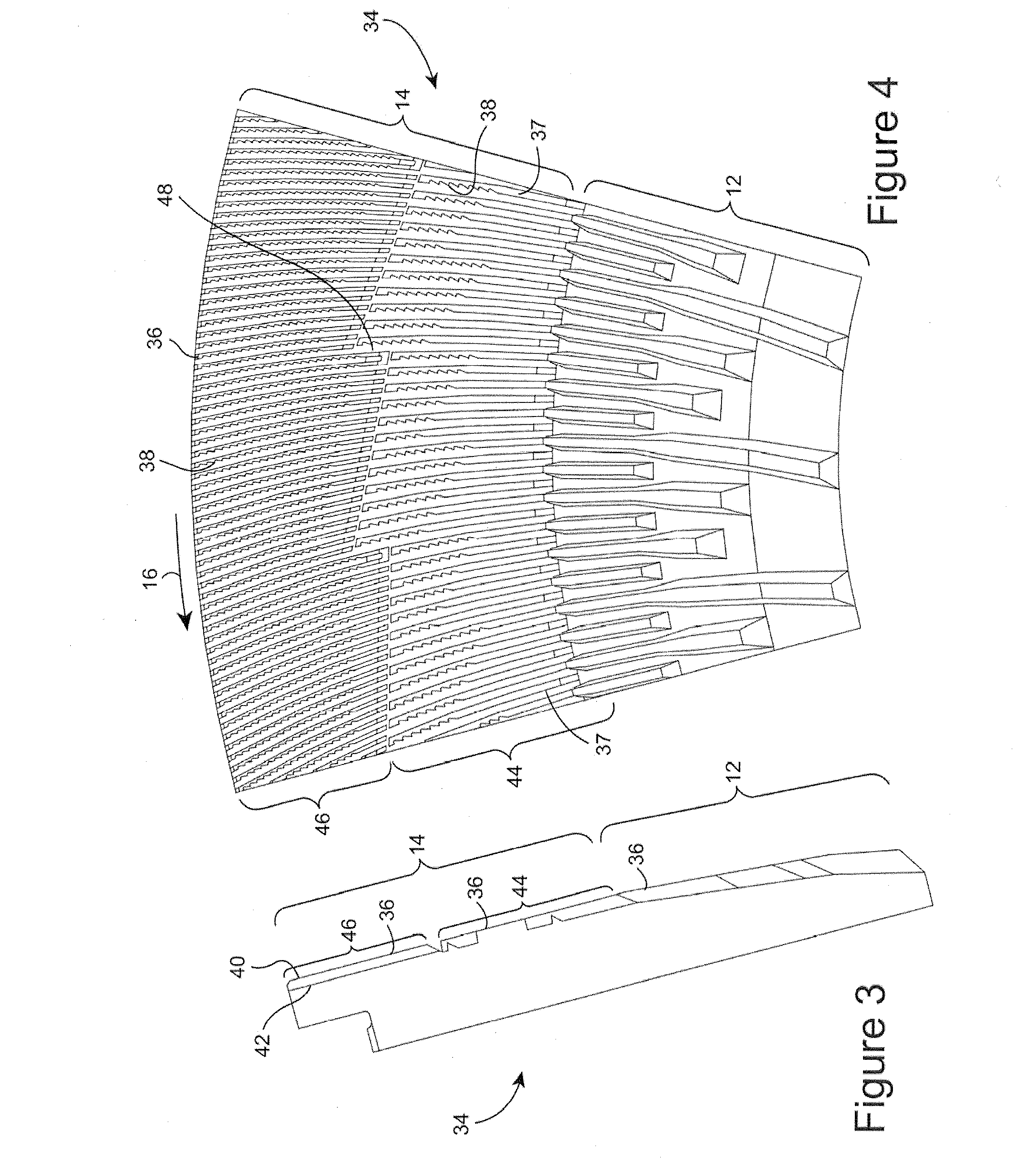Rotor refiner plate element for counter-rotating refiner having curved bars and serrated leading edges
a technology of counter-rotating and curved bars, which is applied in the field of disc refiners, can solve the problems of reducing the energy efficiency of the process, reducing affecting the quality of the finished product, so as to improve the overall refining efficiency, reduce the energy consumed to refine pulp, and prolong the operating life
- Summary
- Abstract
- Description
- Claims
- Application Information
AI Technical Summary
Benefits of technology
Problems solved by technology
Method used
Image
Examples
Embodiment Construction
[0029]The refining process applies a cyclical compression to a fibrous pad formed of wood chips moving in the operating gap between discs of a mechanical refiner. The energy efficiency of the refining process may be improved by increasing the compression rate of the fibrous pad, and reducing the percentage of the refining energy applied at lower compression rates, such as at radially inward portions of the refining zone. The increased compression rate is achieved with the rotor plate designs disclosed herein without necessarily reducing the operating gap to the same extent done with conventional higher energy efficiency refiner plates.
[0030]A relatively wide operating gap between the rotor and stator plates in a refiner (as compared to the narrow gap in high energy efficiency refiners) results in a thicker pulp pad formed between the plates. A high compression ratio is achieved with a thick pulp pad using a significantly coarser refiner plate, as compared to conventional rotor plate...
PUM
| Property | Measurement | Unit |
|---|---|---|
| angle | aaaaa | aaaaa |
| angle | aaaaa | aaaaa |
| angle | aaaaa | aaaaa |
Abstract
Description
Claims
Application Information
 Login to View More
Login to View More - R&D
- Intellectual Property
- Life Sciences
- Materials
- Tech Scout
- Unparalleled Data Quality
- Higher Quality Content
- 60% Fewer Hallucinations
Browse by: Latest US Patents, China's latest patents, Technical Efficacy Thesaurus, Application Domain, Technology Topic, Popular Technical Reports.
© 2025 PatSnap. All rights reserved.Legal|Privacy policy|Modern Slavery Act Transparency Statement|Sitemap|About US| Contact US: help@patsnap.com



